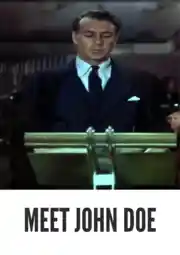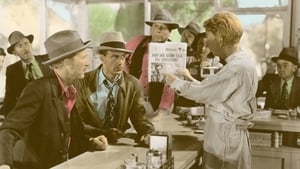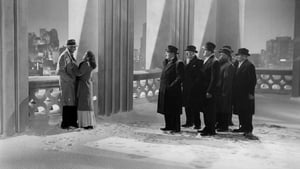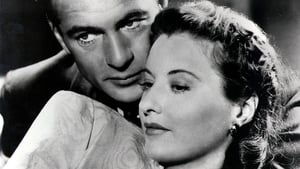Contact: [email protected]
Video Sources 0 Views

Synopsis
[ez-toc]





Introduction
In the vast realm of old movies, few stand as pillars of cinematic history like the 1941 classic, “Meet John Doe Colorized.” Directed by the legendary Frank Capra, this film has etched its mark in the annals of time, and now, in a bold move, it undergoes a transformation – colorization. This article delves into the captivating tale of “Meet John Doe Colorized 1941,” exploring the significance of bringing old films into the colorful present.
Read Media File Transfer Agreement: Terms and Conditions
Read FAQ
The Art and Science Behind Colorizing Films
Before we dive into the world of John Doe’s colorization, let’s unravel the intricate process that breathes new life into old classics. The advent of AI technology, particularly the groundbreaking DeOldify, has revolutionized the art of colorization. This sophisticated technology uses deep learning algorithms to analyze and add color to black and white frames, ensuring a meticulous restoration of visual authenticity.
The challenges faced by colorists are profound. They tread the delicate line between enhancing the viewing experience and preserving the original aesthetic intent of the filmmakers. As we explore “Meet John Doe Colorized 1941,” it’s crucial to appreciate the fusion of art and science that brings these old films into a vibrant, technicolor reality.
A Brief History of Colorization in Cinema
The roots of film colorization trace back to early attempts using technologies like rife-vfi. However, these initial forays were met with controversy, as purists argued that the soul of black and white films lay in their monochromatic charm. Over the years, advancements in frame rate increase technologies and a growing demand for reimagined classics have paved the way for a more nuanced approach to colorization.
The controversy surrounding early attempts reflects a dichotomy – a clash between preserving the original artistic vision and adapting to the evolving tastes of modern audiences. “Meet John Doe Colorized 1941” becomes a fascinating case study in this ongoing debate.
Examining the Impact of Color on “Meet John Doe Colorized”
To understand the implications of colorization on this classic, we must first appreciate the stellar cast led by Barbara Stanwyck, Gary Cooper, and Edward Arnold. The original black and white version of “Meet John Doe Colorized” encapsulates the gripping tale of a political campaign, a newspaper columnist, and a grassroots movement – themes that resonate even in today’s world.
As we venture into the colorized rendition, we dissect how the infusion of color enhances or alters the mood and storytelling. Does it breathe new life into the characters, or does it risk diluting the essence of Capra’s vision? The answers lie within the hues that now grace the frames of this timeless piece of cinema.
Pros and Cons: The Debate over Colorizing Old Films
In the world of classic movies, opinions on colorization are as diverse as the films themselves. Film directors and producers find themselves at the crossroads of tradition and innovation. Advocates argue that colorization can introduce timeless classics to a younger audience, bridging the generational gap. On the flip side, purists assert that tampering with the original format disrupts the cinematic integrity of these masterpieces.
In the context of “Meet John Doe Colorized 1941,” we explore the arguments from both sides of the aisle. Does the colorization serve as a gateway for new viewers, or does it risk overshadowing the brilliance of the black and white original? The clash of perspectives unfolds, mirroring the broader debate within the film industry.
Preserving Cinematic History: The Role of Film Restoration
In the midst of this debate, a crucial aspect often overlooked is the role of film restoration. Film preservationists employ upscale technologies to breathe new life into deteriorating prints, ensuring that the visual quality remains intact. The delicate balance between restoration and colorization becomes pivotal in the quest to preserve cinematic history.
The debate on whether to colorize or not must be viewed through the lens of preserving the essence of classic films. Upscaling technology contributes significantly to the overall quality of restored movies, presenting a compelling argument for a holistic approach to film heritage.
The Case of “Meet John Doe”: To Colorize or Not to Colorize?
As we turn our attention back to “Meet John Doe Colorized 1941,” the question looms large – is this political drama a suitable candidate for colorization? The film’s themes, centered around a political campaign, a newspaper columnist, and a grassroots movement, provide a rich canvas for exploration.
We delve into the visual aesthetics, pondering whether the addition of color enhances the narrative or risks diluting the original impact. In this critical analysis, we weigh the merits and demerits, considering the potential benefits of introducing this classic to a new audience against the reverence owed to Frank Capra’s black and white masterpiece.
Conclusion
In the ever-evolving landscape of cinema, the debate over colorization remains a poignant reflection of the industry’s constant struggle between tradition and innovation. “Meet John Doe Colorized 1941” invites us to ponder the significance of preserving cinematic history while adapting to the changing tastes of audiences.
As we wrap up this exploration, the essence lies in finding a balanced approach – one that respects the artistic vision of the filmmakers, acknowledges the potential of colorization to breathe new life into old classics, and preserves the timeless charm that black and white cinema holds. “Meet John Doe Colorized 1941” may spark controversy, but it undeniably contributes to the ongoing dialogue about the delicate dance between preserving the past and embracing the future in the ever-evolving world of cinema.















